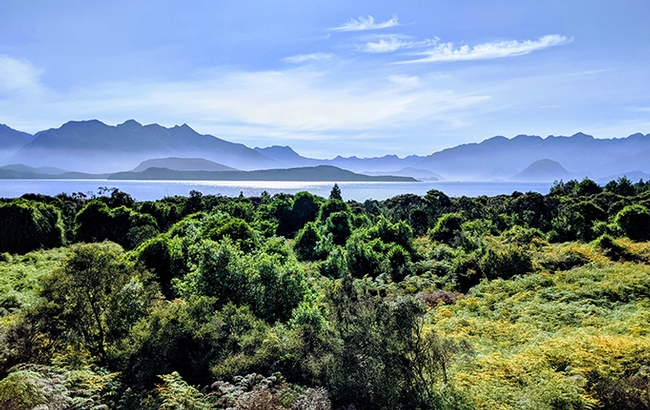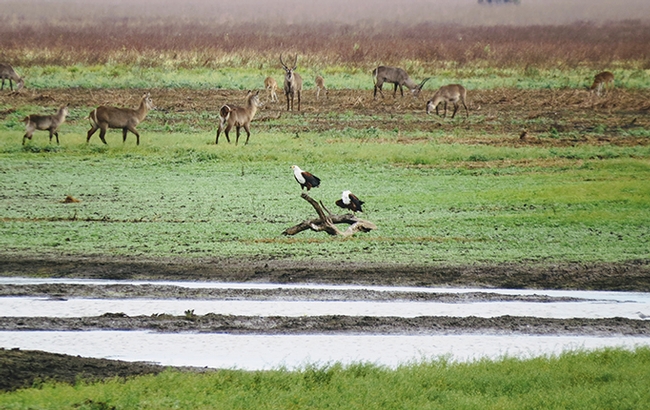Protected areas needed across climates to safeguard biodiversity
Around the world, countries have established protected areas as the primary defense to reduce widespread biodiversity loss and guard vulnerable habitats. However, species and ecosystems are adapted to particular climates—as those climates shift across and outside of protected area boundaries, species may track them into unprotected landscapes where human land uses degrade conservation potential.
In a new study published in Science Advances today, Berkeley researchers offer a broad analysis of how protected areas will continue to capture the climates suitable for species into the future. The study was led by Paul Elsen, a climate adaptation scientist at the Wildlife Conservation Society and former postdoctoral researcher in the Department of Environmental Science, Policy and Management, and it was co-authored with Cooperative Extension specialist Adina Merenlender, recent Ph.D. graduate Eric Dougherty, and Bill Monahan, currently with the U.S. Forest Service.
The authors first determined how climate is expected to change within all terrestrial protected areas globally by utilizing data from several major global climate models and maps of protected areas. They found that over the next 50 to 80 years, the total amount of protected land situated in both warm and cold climates, over a wide range of annual precipitations, is expected to decline significantly.
“We calculate that most countries will fail to protect over 90% of their available climate at current levels, forcing many species to shift into unprotected lands,” says Merenlender.
Species or ecosystems adapted to specific climatic conditions would disproportionately be impacted, such as those in tropical and subtropical moist broadleaf forests, boreal forests, tundra, savannas, grasslands and shrublands.
The authors then tested how different mitigation and adaptation strategies might work to limit the amount of change species may experience in protected areas within countries, thereby reducing species' vulnerability. For example, they investigated whether greenhouse gas mitigation or the addition of new protected areas were more effective for building resilience to climate change.
“Protected areas are invaluable to conserving biodiversity, but where those protected areas are positioned in relation to available climates can have a huge influence on their ability to reduce species' vulnerability to climate change,” says Elsen.
If countries were to expand protected areas to double the diversity of climates under protection, the authors find, they would retain 118% more land area of today's protected climates into the future. By contrast, reducing greenhouse gas emissions in accordance with global targets would increase retention of currently protected climates by 102%.
“If we adopt a strategy for increasing protection that seeks to maximize the diversity of climate types represented within protected areas—for example, cold, warm, hot, wet, temperate, arid, etc.—we stand a much better chance that protected areas will continue to encompass the climatic conditions that support currently protected biodiversity,” says Elsen, lead author of the study.
The authors were surprised to find that simply establishing more protected areas wasn't the solution to building resilience. “Whether it's ‘half-earth' or a more modest target, we need more protected areas but they must be climate smart,” says Merenlender. “This means protecting a full range of climate types, or parks will not protect biodiversity as intended into the future.”
The long-term conservation potential of protected areas depends on careful maintenance of appropriate biotic and abiotic conditions that promote biodiversity. The authors stress that decisions about land use, which are socio-economic in nature, need to also account for conservation and ecosystem health. “Species that track climate into unprotected landscapes may face landscapes that are highly modified by agriculture, infrastructure, development, and other human activities, so it is still critical that we work to increase the suitability of unprotected lands for biodiversity, too,” says Elsen.
The study includes recommendations for planning for future reserves that stand to better protect biodiversity and will be more resilient to climate change over the long term.
Read the study on the Science Advances website.


